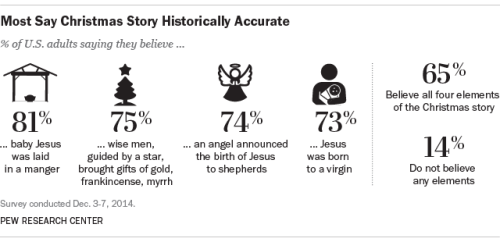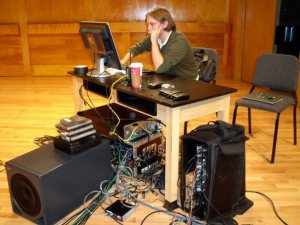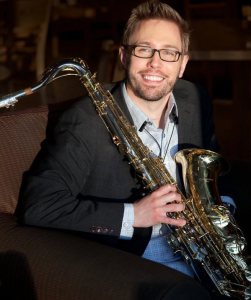This is a very interesting paper: Morphological Evolution of Physical Robots through Model-Free Phenotype Development: http://journals.plos.org/plosone/article?id=10.1371/journal.pone.0128444 .
It’s about artificial intelligence (AI). And about Creativity and intelligence. And, at least in an indirect way, about morality, consciousness, and (the religious and/or woo-ish bullshit concept of) soul.
Unfortunately not easy to understand for a layman. But, please, don’t stop reading now.
The abstract goes like this: Artificial evolution of physical systems is a stochastic optimization method in which physical machines are iteratively adapted to a target function. The key for a meaningful design optimization is the capability to build variations of physical machines through the course of the evolutionary process. The optimization in turn no longer relies on complex physics models that are prone to the reality gap, a mismatch between simulated and real-world behavior. We report model-free development and evaluation of phenotypes in the artificial evolution of physical systems, in which a mother robot autonomously designs and assembles locomotion agents. The locomotion agents are automatically placed in the testing environment and their locomotion behavior is analyzed in the real world. This feedback is used for the design of the next iteration. Through experiments with a total of 500 autonomously built locomotion agents, this article shows diversification of morphology and behavior of physical robots for the improvement of functionality with limited resources.
But, please, don’t despair. There actually is a summary of the paper available for laymen. Have a look here: http://theconversation.com/how-we-built-a-robot-that-can-evolve-and-why-it-wont-take-over-the-world-52506 .
And no allow me to summarize the experiments made by Luzius Brodbeck, Simon Hauser and Fumiya Iida in an even easier way. OK, I admit i oversimplify a bit. But at the same time, the trend is still there, intact. It’s for real, can’t be denied..
The experiments described are all about artificial intelligence (AI). How a mother robot can be programmed to build “her” own robot children. Without any help from humans (except for the instructions given to the mother robot of generation #1).
In order to imitate natural selection – one of the key ingredients, or features, of ordinary evolution of life (according to the Theory of Evolution) – the mother robot was instructed to make small changes every time she constructed a robot child. The mother robot herself had to decide what changes to do, to test.
Some of her robot children were better adapted to their environment than the robot mother herself was. Some were less effective. Because each robot generation is, say just one day or one week. That means 365, or (in the other scenario) 52, generations a year. Cf. new human generations; they need at least 25-35 years to grow up and replace their mother generation.
So IF robot generation #1 (the mother robot) is instructed to destroy/kill all “offspring” but the “fittest” one, and then destroy/kill herself, some good and, hopefully, important improvements could be seen in the “virtual DNA” of the surviving robot generation #2.
Then the survivor of the fittest robot child (belonging to generation #2) would continue this evolutionary process by constructing – “creating” – her own children (= robot generation #3), and the process is reiterated. Over and over again.
A quote from the article above (not the paper):
By allowing the mother to restlessly create hundreds of new shapes and gait patterns for her children, she produced designs that a human engineer might not have been able to build. The most interesting and important thing about this is that she effectively demonstrated creativity.
Read that last sentence again. About how the original mother robot (= generation #1) showed a high level of creativity. In fact MUCH higher than the creative skills of human engineers!
And remember: The mother robot (= generation #1) was able to autonomously construct/”create” her robot children WITHOUT ANY INFLUENCE by human designers. That’s why the mother robot was able to “invent” novel designs that human engineers not even had thought of before. That is, the mother robot lacked the inhibitions of human morality, which enabled her to test unconventional solutions whenever a problem appeared. Was the solution a bad one, then just destroy (kill) the offspring. (Humans rarely do that, at least not in the western civilization, any longer.)
I think – or at least I hope – you understand what I mean. A human engineer gives some instructions to the mother robot (= generation #1). Then the mother robot is left to rely on the tools of Darwinian evolution.
See the many similarities to the creation story in Genesis?
Creativity can be likened to problem-solving capacity. That’s one, often used, definition of intelligence.
Who is in need of a divine being, a God, here? Development by (Darwinian) evolution.
Why shouldn’t we expect also consciousness to develop, emerge, by later robot generations? Along with new moral codes (for instance not kill all offspring but the best one).
Also consider the often proposed links between the religious/philosophical concept of soul and consciousness.
Creativity is an impressive force. Belonging to, being an integral part of, the intelligence spectrum. Particularly when used together with the powers of “ordinary” Darwinian evolution.
Let me finish this post by quoting yet another pair of sentences taken from the article above:
The aim of our research is to engineer the underlying mechanisms of creativity. We wanted to know how machines can handle unknown objects, how new ideas and designs can emerge from a statistical process, and how much time, energy, raw materials and other resources are needed to create anything truly novel.
The key words in that second quote are, in my opinion, “emerge from a statistical process”. Cf. the term algorithm, the process – or the precise set of rules – to be followed in calculations or other problem-solving operations.






 Since its publication in June this year, not a single intelligible rebuttal has been offered to the general thesis presented in
Since its publication in June this year, not a single intelligible rebuttal has been offered to the general thesis presented in 
